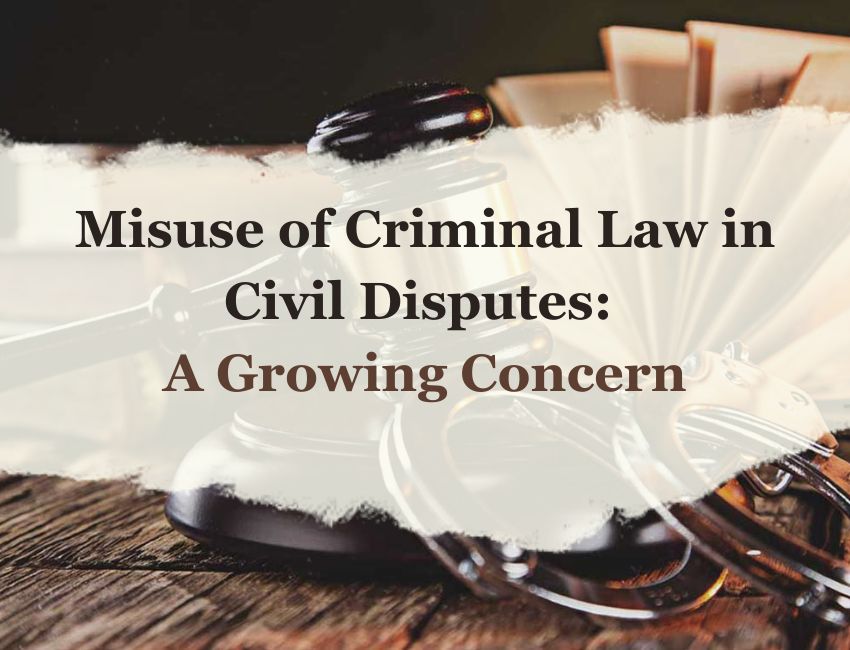@JUDGMENTTAG-ORDER
D.G. Deshpande, J.@mdashHeard Mr. Karandikar for the petitioners and Mr. Shastri for respondent Nos. 1 and 2.
2. The petitioner has challenged the order of the Maharashtra Revenue Tribunal dated 19th September 1985 by which the order of Tahsildar and A.L.T. dated 31-8-1961 was declared as a nullity order and matter was remanded to the Tahsildar for fresh inquiry and decision according to law.
3. The proceedings before the Additional Mamlatdar and A.L.T. were started at the instance of the petitioner and one Shankar Jangal u/s 32-G of the Bombay Tenancy and Agricultural Lands Act, 1948 (herein after referred to as the Tenancy Act). They came to be decided by the Mamlatdar and A.L.T. in August 1961 in favour of the petitioner and they were on the basis of the revenue record in which the name of the petitioner was shown as a tenant or a protected tenant. Shankar Jangal was also one of the parties to the said proceedings as tenant No. 2 and landlord was Ganpatrao Narayanrao Vinchurkar through General Mukhtyar Kashinath Vinayak Dingore. By this order dated 31-8-1961 the Mamlatdar and A.L.T. fixed purchase price and also ordered that on deposit of purchase price a certificate of purchase should be issued in the name of the petitioner u/s 32-M and 43 of the Tenancy Act.
4. After about 22 years the present respondents challenged the said order before the Sub Divisional Officer, Nasik. However that tenancy appeal was rejected by the Sub Divisional Officer as hopelessly barred by limitation. The respondents challenged this order before the Maharashtra Revenue Tribunal (hereinafter referred to as the M.R.T.) and the M.R.T. observed that since there is non-compliance to the mandatory provisions of section 32-G i.e. non-issuance of a public notice and serving a notice on individual tenant, the order was a nullity and as such bar of limitation would not apply.
5. According to Mr. Karandikar, the observations and the findings of the M.R.T. were contrary to law. It was firstly contended that the respondents were no where concerned with the land, that they were brothers of original tenant Shankar Jangal and not the legal heirs. He also contended that in the revenue record from 1950 onwards the name of father of Shankar Jangal was no where shown as tenant and consequently the respondents could not claim tenancy right by way of inheritance or succession. He also pointed out that the Sub Divisional Officer was perfectly justified in rejecting the appeal as the same was filed after about 22 years and the M.R.T. even though held that the appeal was hopelessly barred by limitation, the same was allowed and the matter was remanded on the ground that order was a nullity meaning thereby null and void order could be challenged at any time. Mr. Karandikar relied upon certain authorities in support of his contentions; viz.,
6. On the other hand it was contended by Mr. Shastri that in his statement before Mamlatdar and A.L.T. original tenant Shankar Jangal has stated as "Vahiwat of the suit land was with him from his father''s time". Therefore, according to Mr. Shastri, this statement is sufficient to come to conclusion that Shankar''s father who was also the father of the respondents was the original tenant and hence after the death of father individual notice to the respondents should have been given. Mr. Shastri also pointed out that the possession of the land was with the respondent and the respondent had succeeded in maintaining his name in record of right or in 7x12 extract till today. Mr. Shastri also pointed out that section 32-G of the Tenancy Act made it mandatory for the Tribunal to issue individual notices to all the persons interested therein as per section 32-G (1)(c) and also to issue public notice i.e. by beat of drums and by affixing copy of the said notice on the Chawdi of village as required by the rules framed under the Tenancy Act, and since there is no compliance with these mandatory provisions, the order under 32-G passed by Mamlatdar and A.L.T. in August 1961 becomes a nullity and the M.R.T. was justified in setting aside that order and remanding the matter to the Tahsildar for fresh inquiry according to law.
7. Mr. Shastri has relied upon a judgment of this Court reported in 1978 Mah.L.J. 289 Madhav Kesu Khupse v. Sundrabai Mugutrao Phadatare, wherein it has been held that the enquiry in breach of the provisions of section 32-G and in violation of the principles of natural justice being a nullity and without jurisdiction, the order passed could be challenged in the Civil Court.
8. There can be no dispute that so far as revenue records are concerned, they do not reflect the name of father of Shankar or father of the respondents any where as a person cultivating the land in the relevant period or a tenant. It was the name of Shankar only in his individual capacity which was shown in the revenue records as a tenant of the suit land. However, the respondents are pressing their claim on the strength of a statement made by Shankar before Mamlatdar and A.L.T. in 32-G proceedings. According to M.R.T. Shankar has in the said deposition made a statement that Vahiwat of the suit land was with him from his father''s time. Mr. Karandikar has drawn my attention to the original records wherein the statement of Shankar was recorded in 32-G proceedings. It is true that in that statement Shankar has stated as
9. It will be therefore clear from the aforesaid statement that even though initially Shankar stated that the land was being cultivated from the time of his father, he could not substantiate the said contention. The question is whether on the basis of this statement the respondents can claim any tenancy right in the suit land. Admittedly, the revenue record is not in the name of their father. Further they do not have any kind of evidence to show that the land was cultivated by their father. On the other hand the revenue record stands only in the name of Shankar and therefore, the Tahsildar was justified in initiating the proceedings in respect of this land u/s 32-G of the Tenancy Act as against Shankar, the petitioner and original landlord.
10. So far as issue of notice to the persons interested in the land or issue of public notice is concerned, the M.R.T. itself has taken down the submissions made by Counsel for the petitioner in paragraph No. 6 of its judgment. It is clear in the Koznama dated 31-8-1961 signed by A.L.T. that notices were duly served and it was contended that even though the file did not show any copy of notice, it will have to be presumed that the public notices were issued. The M.R.T. has observed that by course of time the papers got torn or defaced and therefore it is not always possible to come to the definite conclusion as to whether particular step was taken or not.
11. If this was the fact and if the M.R.T. has come to this conclusion and if the Roznama indicated that public notices were issued along with individual notices and the Roznama was signed by A. L.T., then presumption u/s 114 of the Evidence Act is attracted and it will have to be presumed that the official acts were duly performed as it indicated by Roznama, maintenance of which was mandatory in discharging official duties. The judgments relied upon by Mr. Karandikar and cited above, particularly judgment of Justice Tulpule squarely applies to the facts of the present case. In that matter also it was one of the contentions that the impugned order was a nullity and provisions of Limitation Act would not apply. However, the High Court rejected that contention, and held that appeal was barred by limitation.
12. The Sub Divisional Officer deciding the appeal has rightly, therefore, come to the conclusion that the appeal was hopelessly barred by limitation as the same was filed after 20 years without any explanation regarding delay or without any attempt for getting delay condoned on satisfactory grounds. As against this the findings and observations of the M.R.T. that the order being a nullity and could be challenged at any time are totally contrary and cannot be upheld. Firstly because as per Koznama individual notices and public notices were served and once that fact is accepted, right to challenge the said order after lapse of 22 years cannot be said to be available to the respondents. It has to be held that the Appellate Court was perfectly justified in rejecting the appeal as barred by limitation and the M.R.T. has committed an error in setting aside Appellate Court''s order on the ground of nullity.
13. So far as judgment of Justice Aggarwal reported in 1978 Mah. L.J. 289 Madhav Kesu Khupse v. Sundrabai Mugutrao Phadatare is concerned, Justice Aggarwal held that the enquiry in breach of the provisions of section 32-G and in violation of the principles of natural justice being a nullity and without jurisdiction, the order passed could be challenged in the Civil Court. In my opinion, this judgment is of no help to the respondents because the facts do not support the judgment. Once record of the Tahsildar shows that individual notices as well as public notices were issued, no finding can be given that enquiry conducted by the first Court and the order given by him u/s 32-G is a nullity.
14. It was lastly contended by Counsel for the respondents that the M.R.T. has merely remanded the matter for further enquiry. However, the matter is not simple as it appears to be. The respondents, who have failed to prove that their father was the tenant of the suit land, who have further failed to prove that they inherited tenancy right from their father and they also failed to prove that there is no compliance to the mandatory provisions of section 32-G of the Tenancy Act, cannot be permitted to enter into a luxury litigation after 22 years of the impugned order, even possession of the respondents as on today will not affect Consequently the petition is required to be allowed. Hence the following order:---
:ORDER:
The petition is allowed. Rule made absolute.
Impugned order of the Maharashtra Revenue Tribunal is set aside and quashed and the order of the Appellate Court dated 6-12-1983 is maintained.
No order as to costs.
15. Petition allowed.

